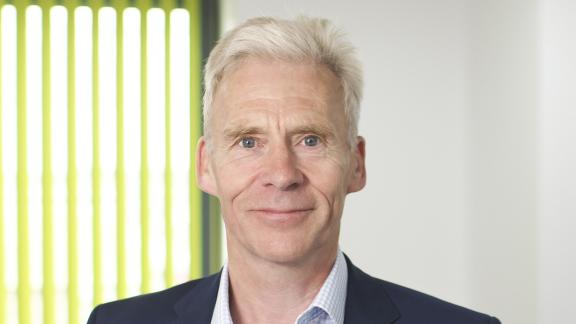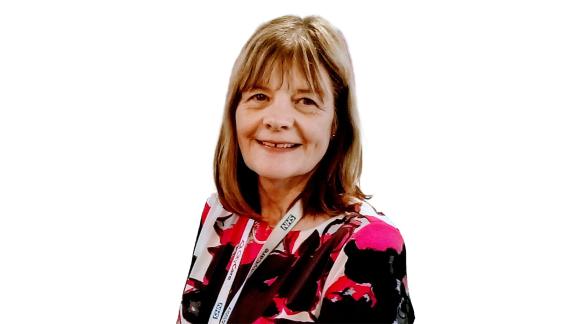Matthew Winn: 'Community services provide the glue and focus that is so person-centric'

Celebrating Community Services week is an annual celebration of the role, breadth and importance of community services. For 2024, we spoke to a selection of leaders from the community sector about what makes them proud to work in community services and why it is important they are empowered.
Matthew Winn is chief executive of Cambridgeshire Community Services (CCS) NHS Trust and Norfolk Community Health and Care (NH&C) SNHS Trust.
Tell us about the range of services your organisations offer?
The two organisations I run (CCS and NH&C) work across the top half of the East of England providing everything from children's services, new-birth visits, working with maternity services, through to children's neurodevelopmental services and mental health support teams in schools.
They also provide a whole range of community-based adult and older people services for those that have long-term conditions, those that are frail and those nearing the end of their lives. Some specialist services go alongside that, and are sometimes delivered in community settings, sometimes in acute care – such as minor oral surgery, HIV services, sexual health services, dentistry, musculoskeletal care, podiatry, wheelchairs. These are all the things that help people to look after their own health and improve their lives so they can live as full a life as possible without healthcare complications.
That's essentially what we do day in, day out, 365 days a year, and many of those services are 24/7.
What would you say makes you most proud of working in the community sector?
I'm really proud of all the services we provide and they are all very different. When we talk about community services, we need to talk about the different dynamics the services are involved with.
So, let's think about children's services. They have a big interaction with social care, with education, with early years support, with acute pathways, and quite often with tertiary hospitals for hyper specialised care, and with hospices.
Those services that support people to look after their own health – such as community nursing, district nursing, specialist nursing and therapy services – work hand-in-glove with primary care and then the adult social care and voluntary sector world.
And then we have services that work mainly with acute clinicians because they are very specialised in their own elements.
When I think about my services, I'm really proud that they move and flex and work in the space between those living at home, those needing help in clinical settings and those needing support in hospitals. They provide the glue and focus that is so person-centric and is about improving the lives of individuals in a proactive way.
Our staff are highly skilled and highly independent. They do that day in, day out and often unseen from public eye, without all the fanfare of the paraphernalia of buildings and kits. That's the essence of great community healthcare.
Could you tell me a bit about the positive impacts that your local community-led initiatives have had on the populations you serve?
Down in Luton and Bedfordshire where CCS provides services for adults and older people and for children , we've got some amazing partnerships both with acute, primary care and the local voluntary sector. They are improving outcomes for those in Southeast Asian communities where they are not readily accessing healthcare or not always prioritising preventative support to look after their own health. Hence our referrals in for cancer services, our referrals in for those type of high-intervention areas are far too high.
The screening; proactive community support; work to employ people from those local communities to help improve the health and care of those local communities, is truly transformational. When the government talks about being preventative and providing more care in the community, that's exactly what we should be doing because it's not about creating change for ten years’ time, it's about creating changes that make a difference to those local populations in a highly targeted way right now to improve their outcomes.
I think about areas like Norfolk, which are highly rural and have quite deprived areas in seaside communities, and that's a very different proposition. In Norfolk, we will have, come this year, built a new modular unit with something like 270 community rehabilitation beds. We're working hand-in-glove with those local communities and the three local hospitals to say how can we improve our rehabilitation and recovery services so people spend less time in bedded care, whether that be acute units or in our community units, and they get home or next place of residence , and they are optimised as quickly as possible?
That has great benefit for them as an individual, for their families. It reduces the cost on local government coffers for long-term social care packages and, crucially, especially at this moment in the history of the NHS when we have so much capacity constraints, it means that acute beds are only used in the way they are really needed and those beds are also freed up for acute centres to be doing surgical interventions, to bring elective waiting lists down so we can improve outcomes for the communities that we serve.
All of these things are really crucial, and are the ‘meat and veg’ of community health services and doing things better for the future.
Why do you think it's important that we empower community services?
When we think about empowering community services, I think that revolves around two or three things. The government intent is to be preventative, to move from analogue to digital and to also move care closer to the communities and provide less in hospitals.
Lord Darzi’s report talks about the disparity of investment in community-based services – and that includes primary care, not just community health services – over the last ten to 15 years.
I see that all the time as a leader - actually the rate of growth in headcount has been tiny compared to other sectors. But it's not just about the rate of growth in headcount, it's the rate of growth in our demand and the complexity of what our population expect, and what we can now do at home.
So, what we have to do to empower community health services is firstly a resourcing envelope that is fit for 2024/2025.
Secondly, we need to spend on digitalised approaches – and that will be kit, hence capital is needed. It will be digital systems that will be remote monitoring, so we can really have a major approach on saying ‘this is normalised care’ to support far more people at home, spot deterioration, support self-care. And do that on an industrial scale.
Thirdly, we need to make sure that the training, education and career pathways support people to say ‘I want to be that autonomous practitioner’, whether that's supporting people with life-limited illnesses as a child or whether that's supporting the increasing numbers of frail older people to live at home.
It’s a specialism in its own right. It's a really advanced way of operating in terms of clinical practice, and our training and education needs to prioritise the development of that type of workforce.
Otherwise the ingredients and the incentives will not happen and therefore we will continue with the status quo, which is a disproportionate focus going into acute care.
I want my acute colleagues to have exactly what they need, including the right facilities, because when we are unwell and we need the kit of a hospital, those need to be there 24/7, 365 days a year and be exemplary.
But the same is true of community health provision and what the government rapidly needs to do with our local systems, with our local leaders, is find practical and sustainable ways to make that happen, over months, over years, to ensure that we have a different pattern of care going forward than we do today.
How do you think that community providers can be enabled to go further faster to support Labour's ambitions to shift to a preventative, community-based model of care?
Supporting community providers to deliver the mandate and aspirations of our current government is really important.
I’m sitting here in the East of England, where I lead two community organisations that will be coming together to be as one, covering 3.5 million people over the next year. But next door, the community services are provided effectively by my acute colleagues. And next door to that there’s some fabulous social services enterprises. So, we are a broad sector that needs support for all types of providers to be exemplary in what they do.
What I would start with, and I’ve always been of this view, is that we need to get commonality about our data.
I wince every time there is a fabulous report form the King’s Fund, the Nuffield Trust, and everyone else, saying ‘we don’t know enough about community health services’.
Well, I know in my own organisations, and in others’, there are copious amounts of data and insight into what we provide, but there’s no commonality and standardisation in what we do.
We need to crack that, and we need to crack it rapidly, and that needs NHS England and others to take that seriously and make great strides. The providers of community health services need to be supported to become more digitally adept and data savvy in terms of how we’re providing information and analysis onf what we do.
I think the second element is we, with primary care, must be taken seriously about capital for both the estate and infrastructure and digitalised elements, whether it’s electronic systems or digitalised approaches delivering care.
They have to be prioritised in the same way that we would prioritise money going into an A&E unit or going into a community diagnostic centre.
These are tangible, practical things that allow and enable community services to be invested in, to provide care for the future.
The third element is cracking the conundrum and the interdependency between adult and children’s social care, and community health services and elements of what integrated care boards do, especially around continuing healthcare.
It ends up often, sadly, being battle grounds and battle lines about responsibility and payment for care, when actually we are all trying to do the same thing, but from different approaches.
If we could unravel practical approaches, whether it be through a refined and updated Better Care Fund, maximising the approaches to section 75 where joint care can be agreed, provided, and funded, or in risk sharing arrangements together, we will get a great deal more out of the taxpayers’ money to provide great care at home than we do in our own silos.
What is the one key ask you have of the new government?
My one key ask for the Secretary of State, or as I know he likes us to call him, Wes, is that we rapidly move from intent. Intent from analogue and digitalisation, from hospital care to community care- we need to rapidly work out how to do that.
This is about design and intent. We must start talking practicalities and we must do that together, from Whitehall, and from areas that we have expertise.
If there was one national ask, it would be to take data and recording seriously. This is key to describing the impact of what we do in the out of hospital world, often called the community health world, across all services for children, adults and older people, and make like-for-like comparisons across the country. This would support intelligent, data-driven conversations about how to change care, and how to improve things for the future.



